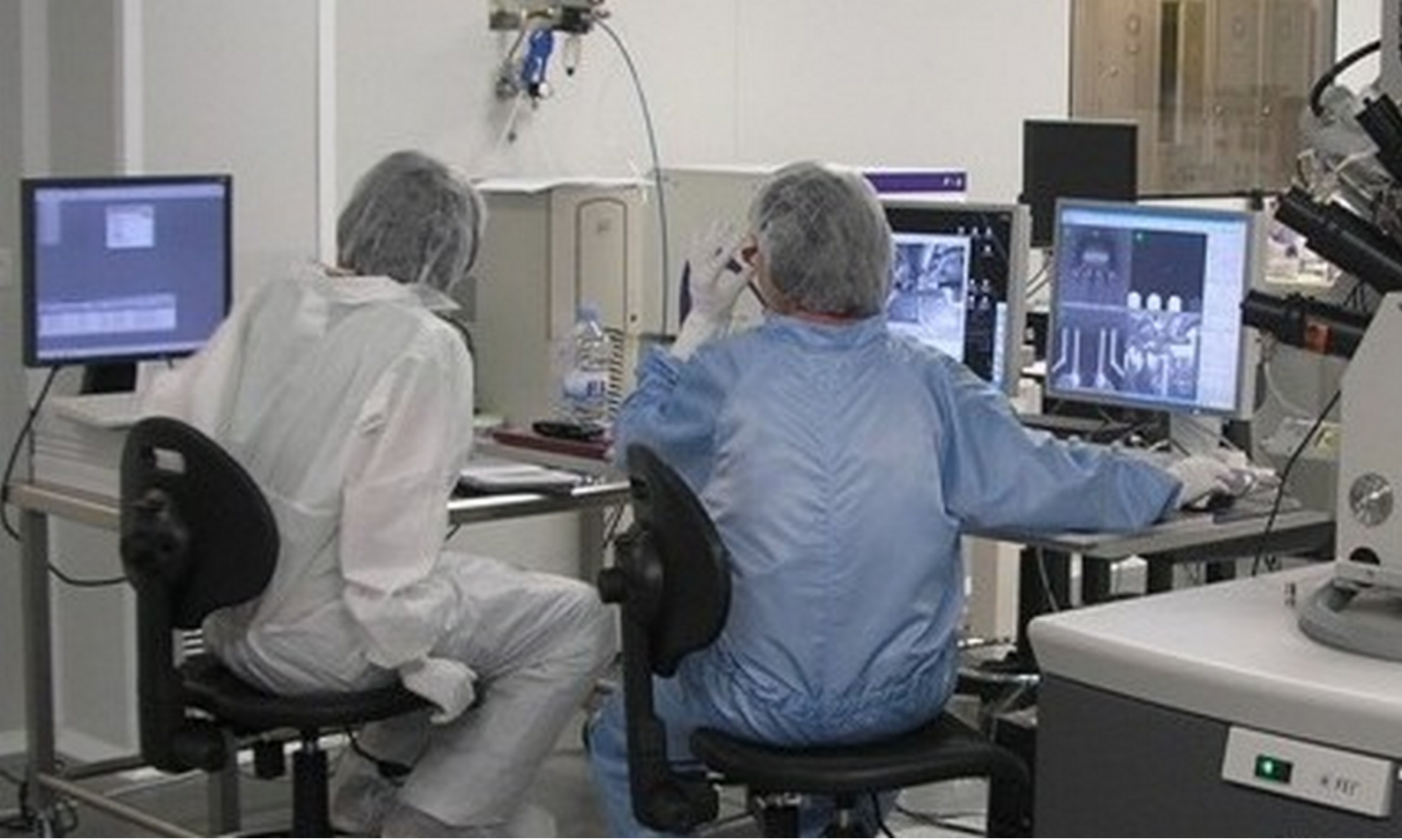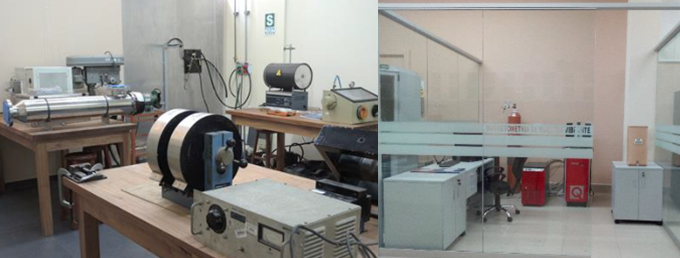UNMSM – Universidad Nacional Mayor de San Marcos host the GISICOF (Research Group of Functionalized Complex Systems) group in Physics Faculty, Lima-Perú.
The GISICOF is part of the Physical Sciences Faculty at the San Marcos National University, located in Lima, Peru. Our research activities are mainly oriented to theoretical and experimental studies of magnetic materials (Heusler alloys, magnetic multilayers), functionalized complex systems (quasicrystals, complex metallic alloys, intermetallics), bioceramics (hydroxyapatite, carboapatite), and low dimensional systems (metallic nanoparticles, graphene, polymeric membranes).

Principal investigator:

Carlos Vladimir Landauro Sáenz
Senior scientist – head of the research group “Functionalized Complex Systems” (GISICOF).
Expertise: Structural, electronic, and magnetic properties of nano and complex systems. Density Functional Theory (DFT), Molecular Dynamics, and Monte-Carlo simulations.
clandauros(at)unmsm.edu.pe
Members:

Justiniano Quispe Marcatoma
UNMSM Senior scientist – head of the group “Películas delgadas y sistemas de baja dimensionalidad”
Expertise: Thin film deposition, Magnetic multilayers, Electric transport, Magnetic properties, Mössbauer spectroscopy.
jquispem(at)unmsm.edu.pe

Víctor Antonio Peña Rodriguez
UNMSM Senior scientist – head of the group “Magnetismo Moderno, Nanomagnetismo y Aleaciones Metálicas”
Expertise: Mechanical alloying, Soft magnetic materials, Heusler alloys, Mössbauer spectroscopy.
vpenar(at)unmsm.edu.pe

Heisemberg Samuel Tarazona Coronel
PhD student at Universidad Nacional Mayor de San Marcos
Expertise: Analytical and numerical modeling on nanomagnetism. Monte Carlo and dynamical simulations. Modeling of Ferromagnetic resonance.
heisemberg.tarazona(at)unmsm.edu.pe

Melissa Sonia Yactayo Yaranga
UNMSM MSc Student
Expertise: Thin films deposition, Magnetic structures, Transport characterization, Structural characterization, Magnetic characterization, TXRF.
melissa.yactayo(at)unmsm.edu.pe

Manuel Gustavo Pinedo Cuba
UNMSM MSc Student
Expertise: Thin film deposition, Magnetic structures, Transport characterization, Structural characterization, Magnetic characterization, Atomistic magnetic stimulation, Density Functional Theory (DFT), Molecular Dynamics, and Monte-Carlo simulations.
manuel.pinedo2(at)unmsm.edu.pe
Equipment:
Magnetron Sputtering
The magnetron sputtering system uses an RF or DC power supply to generate plasma inside a vacuum chamber to pulverize atoms from materials to be deposited. To grow thin films and multilayers in a controlled way, the parameters such as argon flow, substrate-target distance (from 50-150 mm), and power in each source (up to 750 W) should be controlled. The system supports five targets (which could be different), so a large variety of structures can be grown. Samples of thicknesses from 10 nm up to 500 nm are usually deposited on different types of substrates.

Vibrating Sample Magnetometer (VSM)
Magnetic measurements can be performed in the vibrating sample magnetometer, in the temperature range from 50 K to 400 K. The magnetic field can be raised up to 3 T in a high vacuum chamber. Transport measurement setups are available in the same equipment, to measure the resistance of films and devices, in the range of temperatures from 50 K and 400K.

Scanning Electron Microscope (SEM)
SEM uses a focused beam of high-energy electrons to generate a variety of signals at the surface of a solid. The signals that derive from electron-sample interactions show sample information such as external morphology (texture), chemical composition, crystalline structure, and orientation of materials making up the sample.
The electron beam resolution, in high-vacuum imaging, is 3.0 nm for 30 kV (SE), 4.0 nm for 30 kV (BSE) and 8.0 nm for 3 kV (SE). The electron beam parameter space is a beam current up to 2 µA, continuously adjustable, accelerating voltage ranging from 200 V to 30 kV, and a magnification of 5 to 1,000,000×. The inside width of the chamber is 340 mm, and also has an analytical working distance of 10 mm and 12 ports. The SEM equipment is also capable of performing analyses of selected point locations on the sample; this approach is especially useful in qualitatively or semi-quantitatively determining chemical compositions.

X-Ray Diffraction
XRD has been used extensively for the examination of materials and thin films. This is a non-destructive analytical technique that provides detailed information. It can be used for the characterization of material properties like crystal structure, crystallite size, and strain. It is possible to use XRD in a thin-film mode, employing very small take-off angles, to derive some structural information.

Mössbauer Spectroscopy
Mössbauer spectroscopy is a spectroscopic technique based on the Mössbauer effect and consists of recoil-free, resonant absorption and emission of gamma rays in solids. Mössbauer spectroscopy probes tiny changes in the energy levels of an atomic nucleus in response to its local environment. This equipment has a radioactive source of 25 mCi 57Co in a rhodium matrix and measurements can be performed at room temperature and at low temperatures (till 20 K) employing a cryogenic system.

High-Performance Computer Cluster (Yupana-Gimc)
Since 2016 we have had a self-made cluster: Yupana-Gimc (Yupana is an abacus used in the time of the Incas). Initially, it consisted of a couple of intel i7 compute nodes. Shortly after a workstation with a double Xeon processor, 20 physical, 20 virtual cores, and 128 GB RAM was acquired. Since that time, several i7 4 cores compute – nodes were added progressively.
Recently 2 compute nodes (ThinkStation P520) were added to the Yupana-Gimc cluster, providing more computer capabilities: 36 cores, 64 GB RAM, and 2 NVIDIA Quadro GV100 de 2 GB (4xDP) graphic cards.
Thus, the whole cluster has a master node with 2 Tb of storage capacity, 16 GB RAM, and 11 compute nodes with a total of 62 physical cores and 62 virtual cores (124 Threads), and 3 NVIDIA Quadro graphic cards.

Laboratory.



